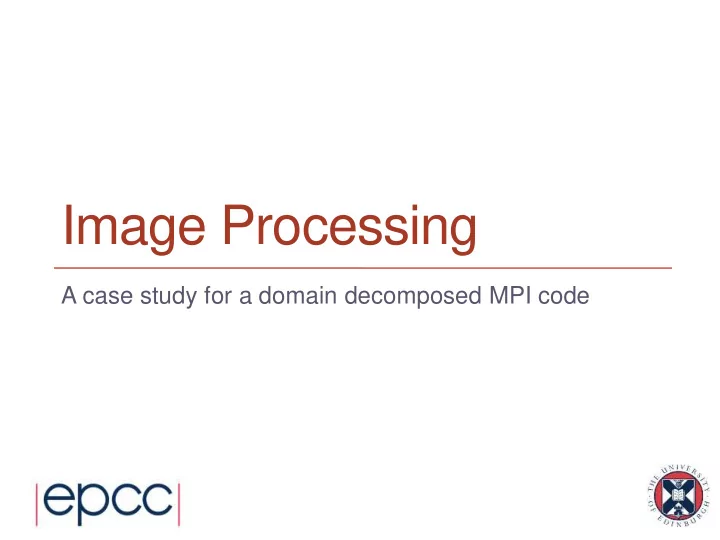

Image Processing A case study for a domain decomposed MPI code
Domain Decomposition 1 • Starting with a big array: 2
Domain Decomposition 2 • Split it into pieces: 3
Domain Decomposition 3 • Assign pieces to processors: 4
Domain Decomposition 4 • Use Halos to deal with interactions 5
Edge detection / image reconstruction single pass hundreds of iterations 6
Edge detection • Compare pixel to its four nearest neighbours - pixel values are from 0 (black) to 255 (white) edge i , j = image i + 1, j + image 1, j + 1 + image i - 1, j + image i , j - 1 - 4 image i , j • Pad 2D arrays with halos - in serial code, halo values set to white (i.e. 255) 7
Image reconstruction • Jacobi Solver to undo the simple edge detection algorithm (a five-point stencil) - simple example of discretised partial differential equation with nearest-neighbour interactions Ñ 2 image = edge - actually solving ( ) new i , j = 1 old i + 1, j + old 1, j + 1 + old i - 1, j + old i , j - 1 - edge i , j 4 • Repeat many times - in parallel, must update halo values from neighbours every iteration 8
Domain Decomposition • Different choices in C and Fortran 9
The case study • I provide you with: - More detailed printed instruction - Tar-ball (Choice of C or Fortran) • Input routine • Output routine • Couple of input files • Tasks - Write a serial code (with halos for fixed boundary conditions) • check that the serial code works!! - Distribute the work onto the processors; separate reconstructions - Get the halos exchanged; single reconstruction, identical to serial - Further suggestions on the instruction sheet 10
Recommend
More recommend